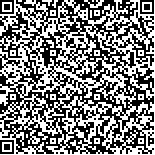本文已被:浏览 885次 下载 479次
投稿时间:2019-09-24 网络发布日期:2020-07-20
投稿时间:2019-09-24 网络发布日期:2020-07-20
中文摘要: 目的 探讨卵泡期高孕激素状态下促排卵(PPOS)方案与微刺激方案在卵巢储备功能下降(DOR)患者中行体外受精/卵细胞浆内单精子注射(IVF/ICSI)助孕的有效性与经济性。
方法 回顾性分析2017年8月至2018年2月在中南大学湘雅医院生殖医学中心接受IVF/ICSI治疗的DOR不孕症患者共226个周期,根据促排卵方案不同随机分为A组(PPOS组,n=103)和B组(微刺激组,n=123),比较两组患者的一般资料、临床结局及经济效益。
结果 两组患者的一般资料具有可比性。A组的HCG日黄体生成激素(LH)、孕酮(P)显著低于B组(P均<0.01),HCG日雌二醇(E2)稍低于B组,但差异无统计学意义(P>0.05);A组HCG日优势卵泡数、获卵数、减数分裂Ⅱ期(MⅡ)卵子数、双原核(2PN)胚胎数、可用胚胎数、优质胚胎数多于B组(P<0.05,P<0.01),A组卵泡输出率显著高于B组(P<0.01);卵子利用率、妊娠率及2PN率稍高于B组,但差异无统计学意义(P均>0.05);A组零获卵率显著低于B组(P<0.05),用促性腺激素(Gn)量、Gn天数显著多于B组(P均<0.01);A组无胚胎周期发生率稍低于B组,但差异无统计学意义(P>0.05);A组的成本效果比(总费用/所获卵子或胚胎数)低于B组。
结论 从临床结局来看,PPOS方案较微刺激方案临床疗效好;从经济学分析上看,PPOS方案零获卵率显著低于微刺激方案,PPOS方案的成本效果比低于微刺激方案,提示PPOS方案较微刺激方案经济效益高。
中文关键词: 卵巢储备功能减退 促排卵,高孕激素状态下 微刺激 促排卵结局 成本效果比
Abstract:Objective To investigate the efficacy and economy of progestin-primed ovarian stimulation (PPOS) and micro-stimulation during follicular period in patients of diminished ovarian reserve (DOR) who received fertility treatment of in vitro IVF/ICSI.
Methods A retrospective analysis of 226 cycles of DOR infertility patients who received IVF/ICSI treatment in Xiangya Hospital Central South University from August 2017 to February 2018 was carried out.According to the different ovulation promotion schemes,patients were divided into group A (PPOS group,n=103) and group B (micro-stimulation group,n=123).The general situation,clinical outcome and economic benefit of patients in group A and B were compared.
Results The general conditions of the two groups are comparable.LH and P on HCG day in group A were significantly lower than those in group B (all P<0.05).The E2 on HCG day in group A was slightly lower than that in group B without significant difference (P>0.05).The number of dominant follicles,retrieved oocytes,MII oocytes,2PN embryos,available embryos and high quality embryos on HCG day in group A were significantly higher than those in group B (P<0.05,P<0.01).The egg utilization rate,pregnancy rate and 2PN rate in group A were slightly higher than those in group B,but the difference was not statistically significant (all P>0.05).
The rate of zero oocyte on retrieval in group A was significantly lower than that in group B (P<0.05).The amount and days of using Gn in group A were significantly higher than those in group B (all P<0.05).The rate of non-anembryonic cycle in group A was slightly lower than that of group B without significant difference (P>0.05).The cost-effectiveness ratio of group A was lower than that of group B.
Conclusions From the perspective of clinical outcome,the clinical efficacy of PPOS is better than that of micro-stimulation.From the perspective of economic analysis,the rate of zero oocyte on retrieval of PPOS is significantly lower than that of micro-stimulation,and the cost-effectiveness ratio of PPOS is lower than that of micro-stimulation,suggesting that the economic benefit of PPOS is higher than that of micro-stimulation.
keywords: Diminished ovarian reserve Progestin-primed ovarian stimulation Micro-stimulation Ovulation induction outcome Cost-effectiveness ratio
文章编号: 中图分类号: 文献标志码:A
基金项目:国家自然科学青年基金(81401269)
附件
| Author Name | Affiliation |
| ZENG Qian-ling,YAN Yi,LI Yan-ping,ZHAO Jing | Reproductive Medicine Center,Xiangya Hospital Central South University,Changsha,Hunan 410000,China |
引用文本:
曾倩凌,燕怡,李艳萍,赵静.高孕激素状态下促排卵与微刺激方案在卵巢储备功能下降患者中的临床结局及经济效益比较[J].中国临床研究,2020,33(7):908-912.
曾倩凌,燕怡,李艳萍,赵静.高孕激素状态下促排卵与微刺激方案在卵巢储备功能下降患者中的临床结局及经济效益比较[J].中国临床研究,2020,33(7):908-912.
